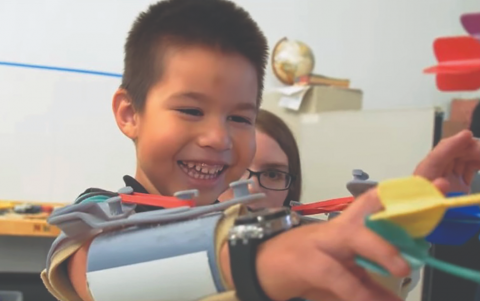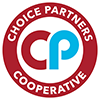Foothill College Students 3D Print Exoskeleton Arms for Preschooler
Rare condition forces students to get creative and find custom solution.
Addressing Issues Today for a Brighter Tomorrow
Noel, a bright and energetic 4-year-old boy, was born with arthrogryposis, a condition where thickening and scarring of the muscle tissue that left him unable to bend his arms, making it difficult to eat or dress without help. Noel adapted by arching his back to lift his arms, but his occupational therapists were concerned this would cause future back problems.
This project made me realize I really like applying science to help people. Now I’m finally realizing what I want and I’ve never felt so certain.” - Kevin Godines, student, Foothill College
3D Printed Independence
Now, thanks to a custom 3D printed exoskeleton, Noel uses his arms under his own power without putting his back at risk. Developed through a partnership between Noel’s occupational therapists and Foothill College in California, the exoskeleton is helping Noel gain more freedom of movement. Students in the community college’s biomedical device engineering program designed the exoskeleton under the direction of instructor Dr. Oxana Pantchenko and occupational therapists at California Children Services. The device uses rubber bands to resist gravity and assist Noel’s own muscles in lifting and bending his arms, and helps the boy get stronger the more he uses it.
“One challenge in developing the exoskeleton arms is that they must be designed from scratch to perfectly fit Noel,” Pantchenko said. “Furthermore, a complex mechanism is needed in order to match the range of motion of the elbow and the exoskeleton arms need to be very light so he can wear them easily.”
Powerful Design
Foothill College students addressed these challenges by using the school’s PolyJet™ technology-driven 3D printer to quickly print a device as one assembled part that is lighter than conventional metal devices, avoiding the need for costly casting or machining. “The prototype of both arms prints in 24 hours and costs only about $100 per arm,” Pantchenko said.
3D printing empowers students to easily scale components to fit and to affordably reprint them to accommodate Noel’s growth and development. Support material is removed simply with water. The flexibility of 3D printing also gave students an opportunity to personalize the device, making it more fun for Noel to wear by adding spider designs inspired by his favorite superhero.
“With the 3D printed exoskeleton, Noel can now eat, play with toys, and even put a hat on his head without any assistance,” Pantchenko said. Family and occupational therapists noticed a difference quickly in Noel with his new exoskeleton arms. Now his movements are more in alignment with less back bending, and Noel is happier and more independent.
Despite having arthrogryposis, Noel can bend his arms and play more using his custom 3D printed exoskeleton arms.
Hands-on Learning
“This project made me realize I really like applying science to help people,” said Kevin Godines. “Now I’m finally realizing what I want and I’ve never felt so certain.” Foothill College continues to inspire students with project-based learning opportunities that impact real-world applications in biomedical device engineering and 3D printing to help more children like Noel. “My goal is to come up with more projects to get students excited about biomedical engineering,” said Pantchenko.





